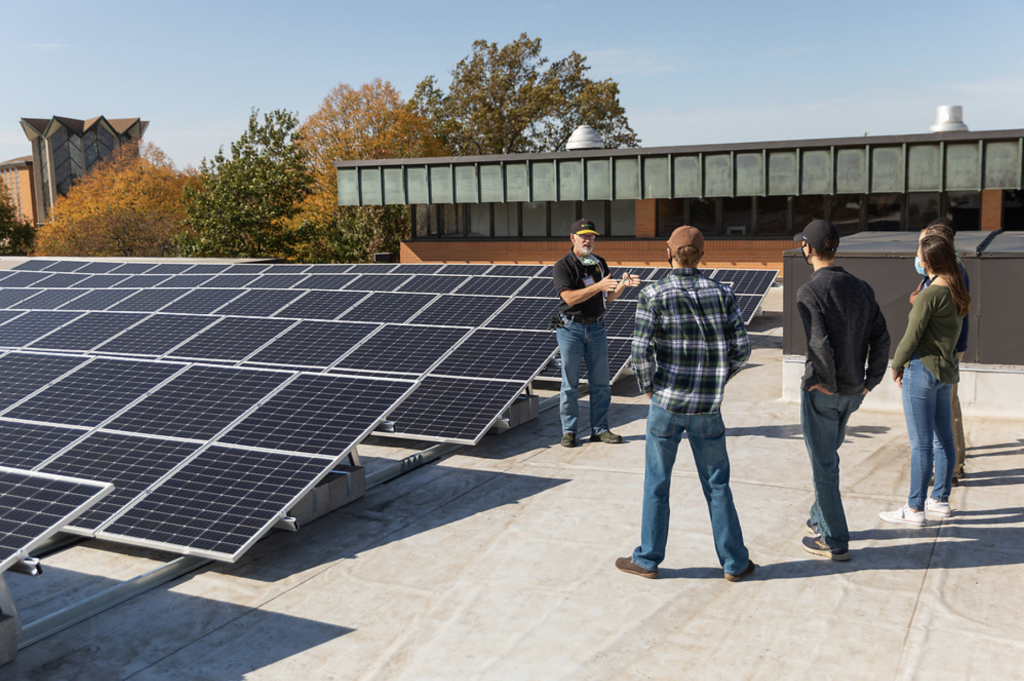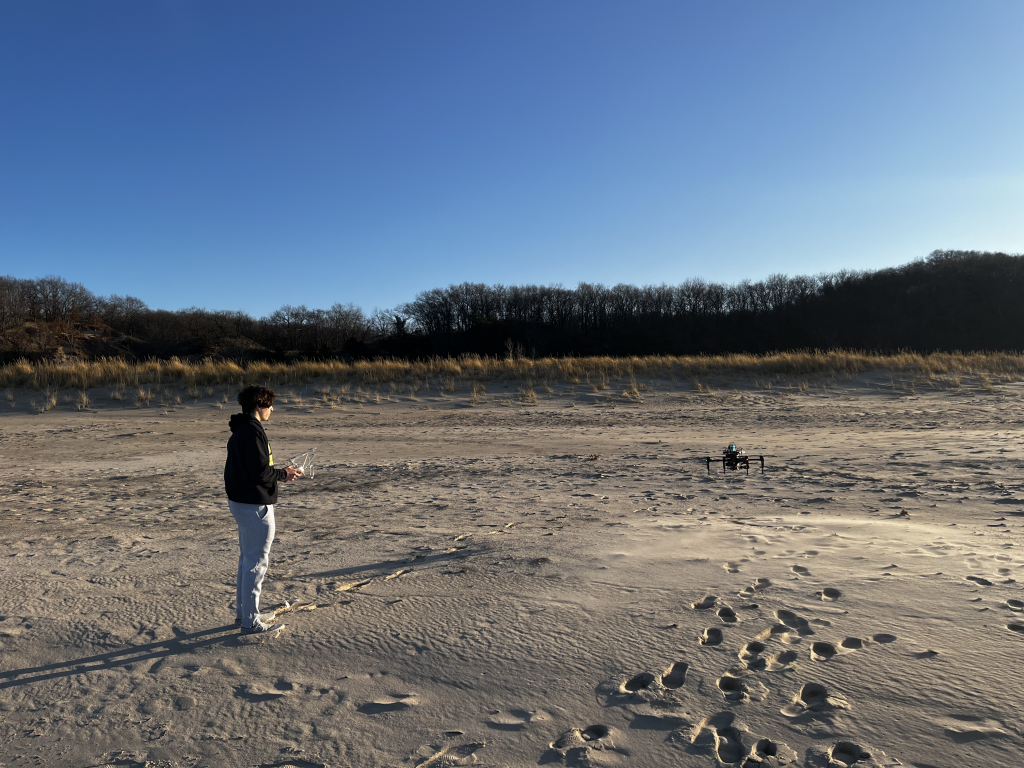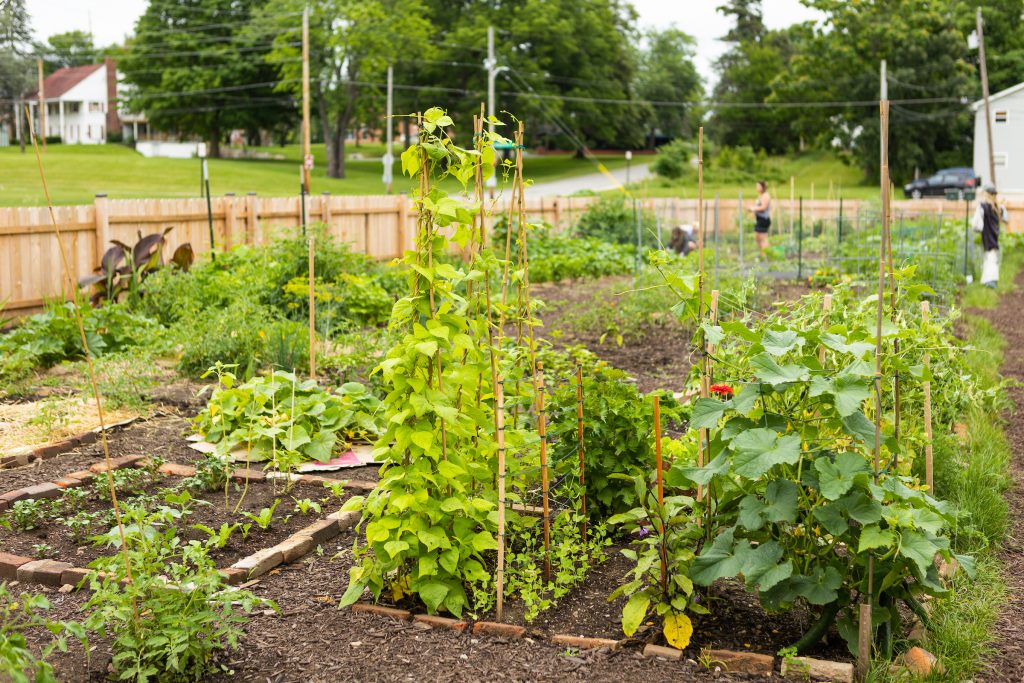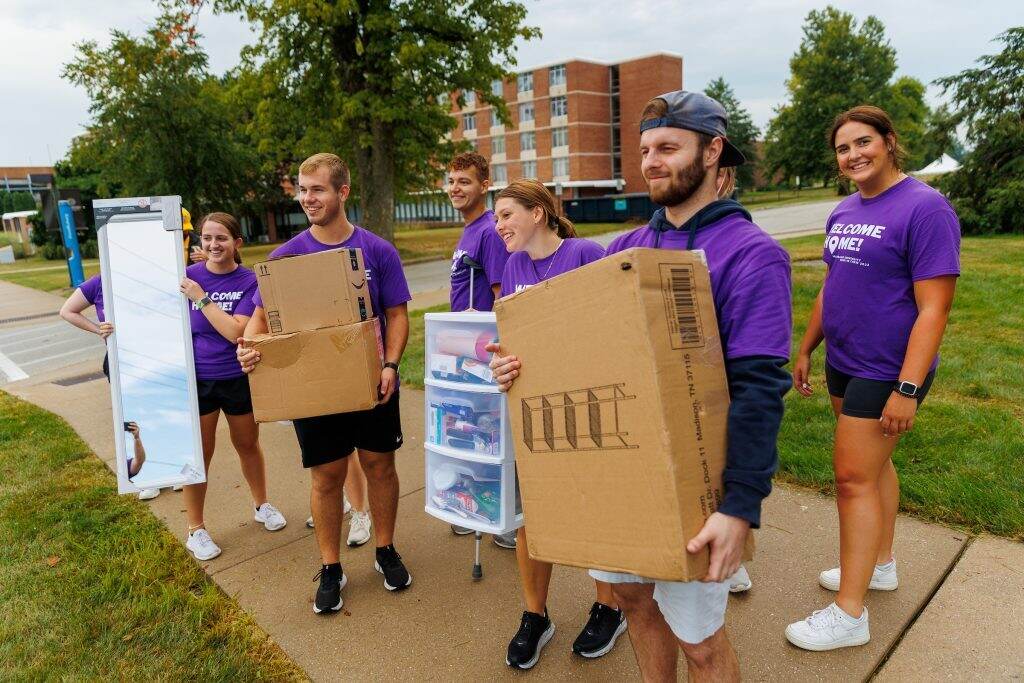Stewardship, Responsibility, and Community Safety
Every Earth Day, people around the world look for ways in which they can be better stewards of the environment, more responsible in their consumption of goods, and how they can help keep the planet a safe, livable place. At Valparaiso University, our student researchers, professors, and volunteers work year-round to make sure that our campus is always pushing towards a more sustainable future. Here are just some of the ways that the Valpo community is keeping the environment top of mind:
Taking Steps Towards Renewable Energy
The James S. Markiewicz Solar Energy Research Facility (SERF), the only undergraduate solar furnace in the world, gives Valparaiso University students a unique opportunity to explore the cutting edge of renewable energy. This past year, the SERF has been part of two U.S. Department of Energy-funded projects focused on finding ways to bring down the cost of alternate fuels, and to store and transport solar energy.
The first grant — working in collaboration with Arizona State University, the University of Michigan, and Sandia National Laboratories and totaling $125,000 for Valpo — is working towards methods of producing hydrogen for one dollar per kilogram. This can be achieved with the combination of solar power and a class of materials called perovskites, which serve to remove oxygen from water molecules. Valparaiso University brings the solar element to the project, testing the perovskites designed by Arizona State and demonstrating their viability at a larger scale.
“Arizona State can make it work with a small amount of material, which is great and important, but we have to take it and make it work in a much larger quantity,” said Luke Venstrom ’07, Ph.D., associate professor of mechanical engineering.
The second project, being pursued in conjunction with Advanced Cooling Technologies, has given $25,000 for the University to help research a vital component for solar energy storage. Valparaiso University alumnus David-Paul Schulze ’22, now employed by Advanced Cooling Technologies, set the project into motion, and had the initial idea to partner with Valpo. His company will design and manufacture a board that can withstand the heat, and the SERF at Valparaiso University will be used to test it.
Learn more about these projects here and here. To learn more about the history of the SERF at Valparaiso University, click here.
Air Quality
The health consequences of the pollutants in the air, water and soil from industrial waste can be varied and severe. Widespread respiratory issues are frequent, especially in the youth. Chris Iceman, Ph.D., associate professor of chemistry at Valpo and his student researchers, including Abe Orozco Munoz ’25, have been monitoring the problem, and testing the limits of measurement tools meant to track particles in the air.
“I think what’s really fascinating about air quality is that it affects everybody,” says Professor Iceman. “It doesn’t matter if it’s two states over or on another continent. Eventually, it’s all going to come back to being everybody’s problem. I think there’s a lot of wisdom in thinking of this from a larger perspective.”
For Abe, the goals of the project are the pursuit of environmental justice and spreading awareness around one of life’s most critical resources.
“Working on this project, I learned how underrepresented air quality is,” Abe says. “I feel like it’s not talked about as much as the other environmental areas. Air quality has such a great impact, and when we talk about food and water consumption, around 2-2.5 kilograms, we consume around 13 kilograms of air.”
Many of their tests and measurements have found that local manufacturing facilities, such as those that make steel, are producing an excess of waste that’s ending up in the air. Through their work, Professor Iceman and Abe hope to spur legislative change and encourage more responsible manufacturing while recognizing the importance of industry to the area.
“These are companies and industries that have literally built our country. Without them, we wouldn’t have railroads, we wouldn’t have skyscrapers, we wouldn’t have the ability to drive our cars the way we do,” Professor Iceman says. “But for these communities to face the fallout of that, that’s what we’re talking about when we talk about environmental justice. We’ve all benefited from these things, but when it comes down to who’s paying for them, it’s communities like ours across the country.”
For more on their research and how it’s impacting Northwest Indiana click here.
Getting a Handle on Microplastics
“They’ve been found, literally, from the highest mountain tops to the lowest points in the ocean. On Earth, they’ve been discovered everywhere,” says Julie Peller, Ph.D., professor of chemistry at Valparaiso University, on the prevalence of microplastics in the Earth’s environment.
Unlike organic waste, plastic does not break down at the molecular level, instead breaking into smaller and smaller fragments, until they’re too small to see without special equipment. Nanoplastics, or plastic pieces less than a micrometer in size (a human hair is 50 micrometers thick), have also been detected in water and organic matter, including inside humans.
“All of these release particles, including our plastic drinking cups and containers,” Professor Peller says. “We’re actually exposed to these a lot more than we ever thought.”
Professor Peller, her research partners, and her students have been artificially aging plastic using radiation in the lab to get a better understanding of how the material changes over time and how it could impact the environment. The project has been a standout way for students, such as chemistry major Scott Kaiser ’24, to get their names on research papers and help make a real difference.
“It’s made me more aware of all the plastic pollution issues within the world,” Scott says. “It makes me want to find new ways to recycle plastic or reduce plastic. It’s also made me a little scared for the future knowing how easy it is to ingest plastic.”
Learn more about microplastics, the scope of the problem, and what you can do about it in Valpo Magazine here.
Campus Sustainability Initiatives
The Valparaiso University community does a variety of things year-round to encourage sustainability and create a responsible campus. A lot of these things are behind-the-scenes changes performed daily by Valpo’s facilities management department that make a big impact.
In terms of waste disposal, a campus wide internal audit has led the University to reduce the number of trash cans (some were less than 10 feet apart) by 210. The bag removal policy was also changed so that plastic bags must be at least half full before they are removed for disposal, saving a massive amount of money and plastic waste. More recently, k-cup disposal units have been placed in offices around campus, allowing coffee drinkers to dispose of their waste more sustainably.
Mitigating the amount of waste generated by move-in and move-out days is a major undertaking, but facilities management has been doing what it can to divert reusable and recyclable materials from the landfill. Countless cardboard boxes, as well as electronic waste such as lamps, televisions and other appliances have been saved from the dumpster. Additionally, roughly 400 pounds of nonperishable food was gathered and donated to Hilltop House in summer of 2023.
On top of mitigating waste, the University is also trying to minimize it. Incandescent bulbs across campus are being replaced with LED variants, HVAC systems are being gradually upgraded, and policies on heating and cooling largely unoccupied buildings during the summer and holiday breaks are ensuring that Valpo is using as little power as possible.
Valpo’s efforts also extend to the landscaping and plant life. The campus has two gardens, a community garden and a medicinal herb garden, which use only organic methods of pest control and fertilization. Likewise, the use of herbicides, fungicides and pesticides is limited when maintaining the grounds. Valpo’s most iconic plant, the Merlin tree — now at the end of its lifespan — has had 100 acorns harvested and planted by the Biology Club, led by Laurie Eberhardt, Ph.D., professor of biology and chair of the biology department. Those acorns are being grown in the community garden until they are ready to be moved to their permanent campus homes.
Be it on-campus or part of the wider regional community, Valparaiso University students, professors and staff are all working to live the University’s value of sustainability. As issues with air, renewable energy, and waste continue to evolve, Valpo will continue to evolve our methods of stewardship with them, maintaining a safe and healthy environment for today’s community, and the community of tomorrow.



